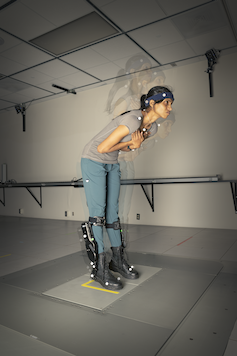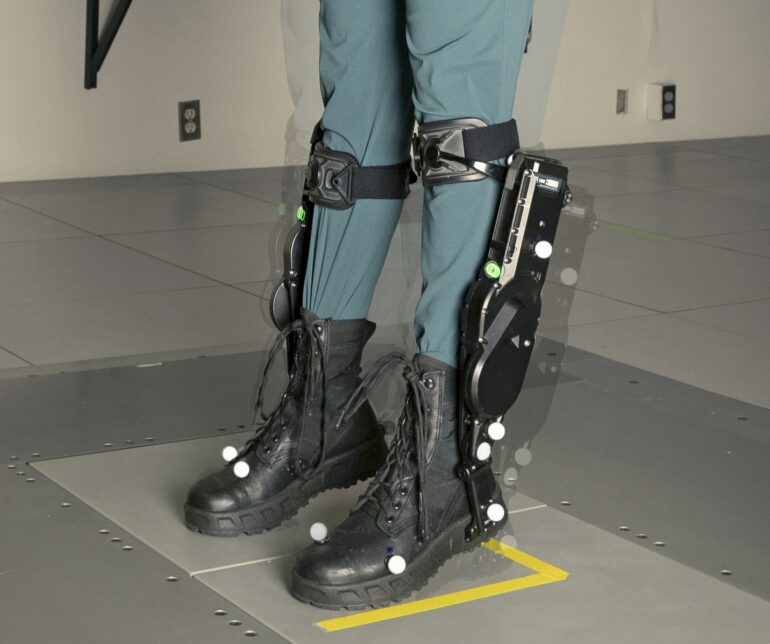The Research Brief is a short take about interesting academic work.
The big idea
Robotic boots providing superhuman reflexes can help your balance. Our new study shows that the key to augmenting balance is to have boots that can act faster than human reaction times.
When people slip or trip, their reactions to regain balance are far slower than some machines can act. For humans, and other animals with legs, it takes time for biological sensors to send signals to the nervous system and then turn on muscles. Robots can act much faster, using wires instead of nerves to send their signals.
But robots are still notoriously bad at balancing, because they can’t yet mimic how humans respond when their balance is challenged. We are biomechanical engineers and rehabilitation physiology researchers who study the neurophysiology of movement. In our study, we sought to answer the question of whether wearable robots – like powered lower-limb exoskeletons or prostheses – can improve balance above and beyond a normal baseline.

In this composite time series image, a test subject wearing a robotic lower-limb exoskeleton pitches forward but doesn’t need to step to maintain her balance.
Candler Hobbs, Georgia Institute of Techology
We used a motorized floor to literally “pull the rug out” from under healthy young participants – pitching them forward toward the ground. We asked them to stay balanced with their feet in place, but sometimes the slip was so large that they had to take a step to avoid face-planting on the ground. Then, we programmed the exo-boots to give the participants a blast of assistance with either the same delay as their natural response or artificially faster than humanly possible and compared that to giving no exo-boot assistance at all.
We were surprised to find that only the mode that beats the human reaction to the punch helped users recover balance faster and prevented them from taking a step to recover.
At the same time, we recorded physiological responses of our exo-boot “test pilots” to see whether the device was mimicking – or potentially interfering with – their underlying balance responses. Using ultrasound, we could look under the skin to see how calf muscles stretched during the slip. Muscle stretch generates critical sensory signals needed by the nervous system to initiate a balance reaction.
The faster-than-human exo-boot balance response actually eliminated calf muscle stretch signals, but the control signals to those same muscles, in response to the nervous system generally, persisted. This finding highlights that the nervous system is more than a set of simple reflexes that react to local muscle stretch but instead acts to gather information from throughout the body to remain upright in both standing and walking.
Why it matters
People tend to take balance for granted. But every step holds the possibility of a fall, and bad falls are a top reason…
